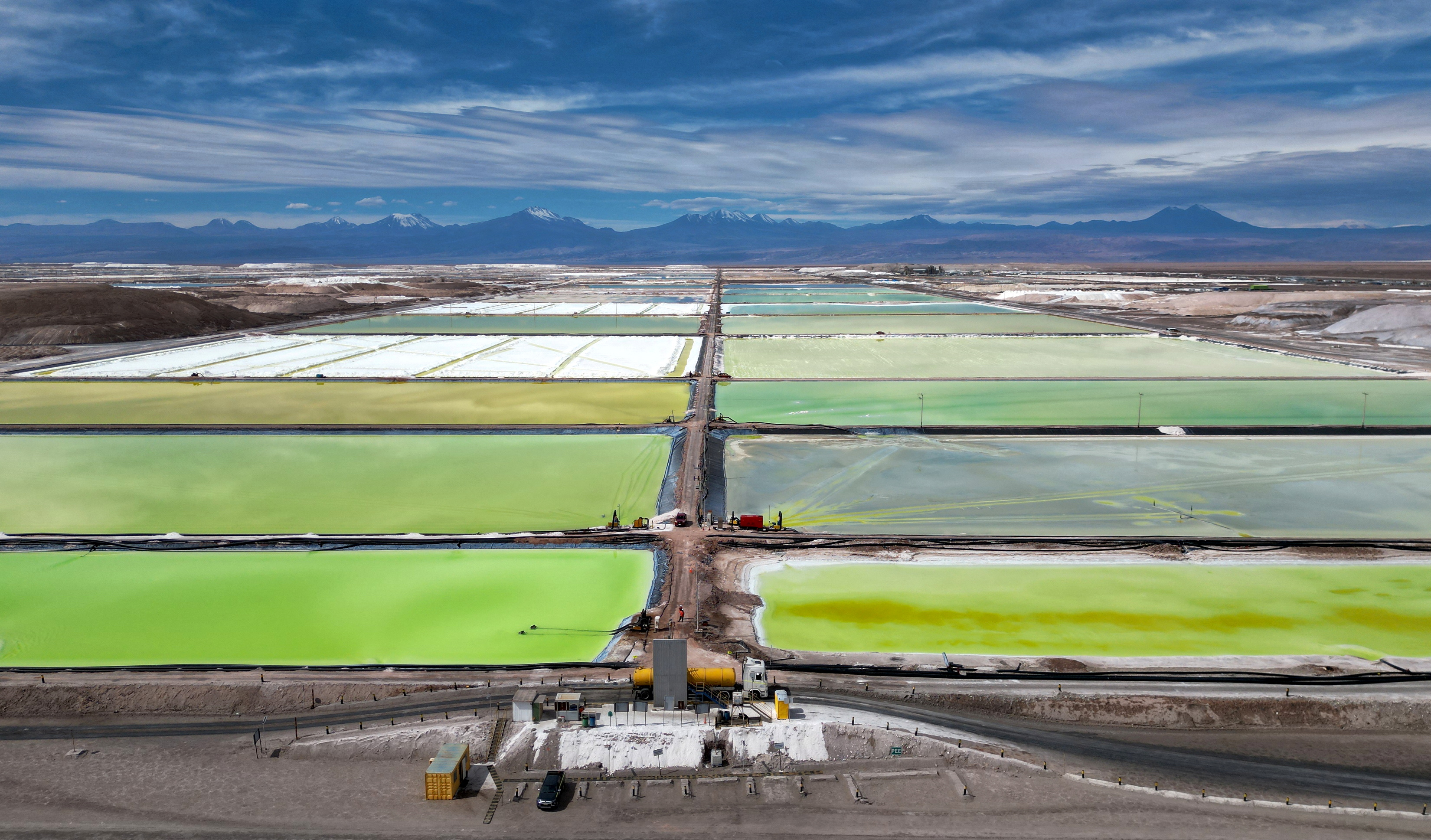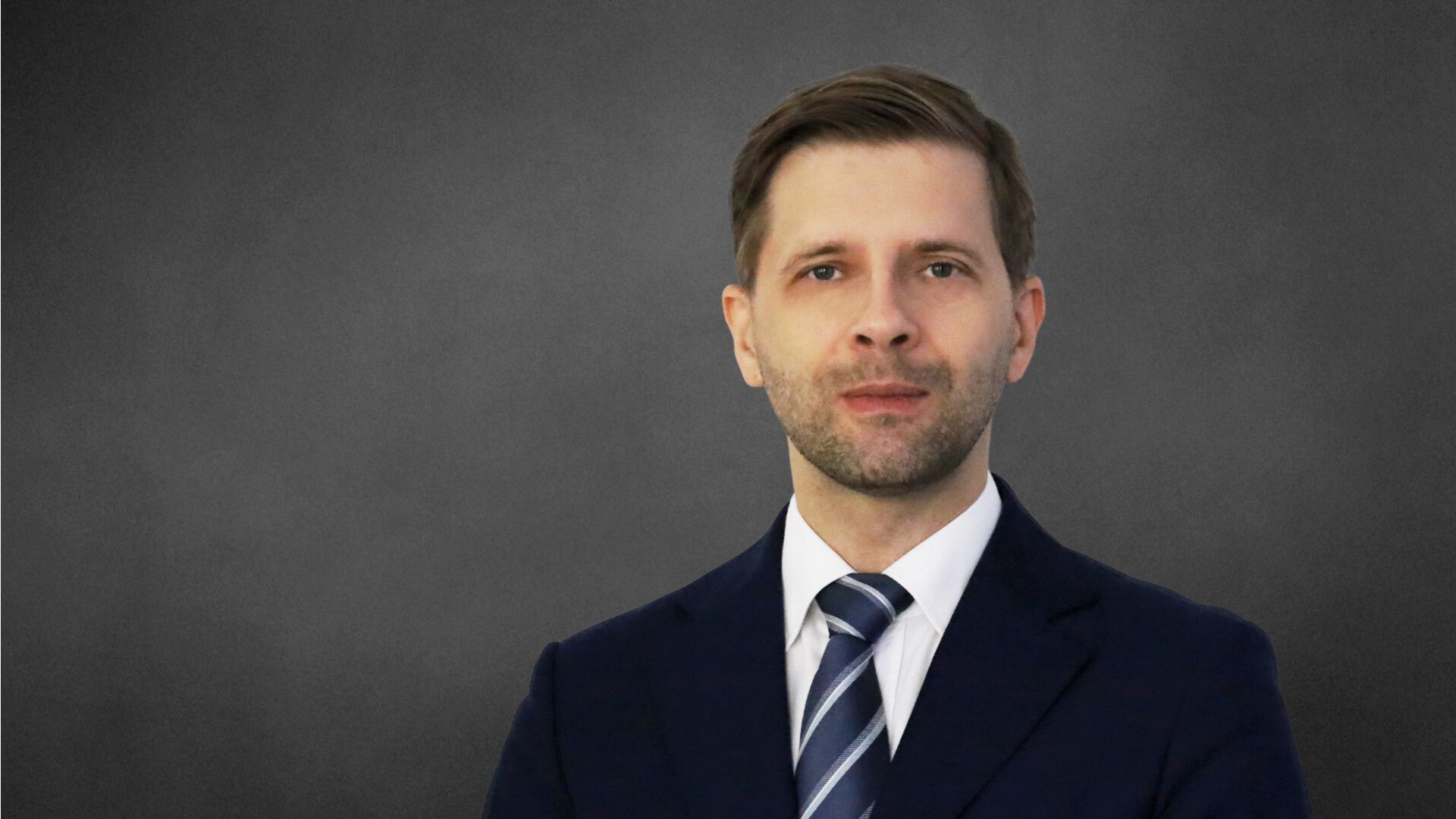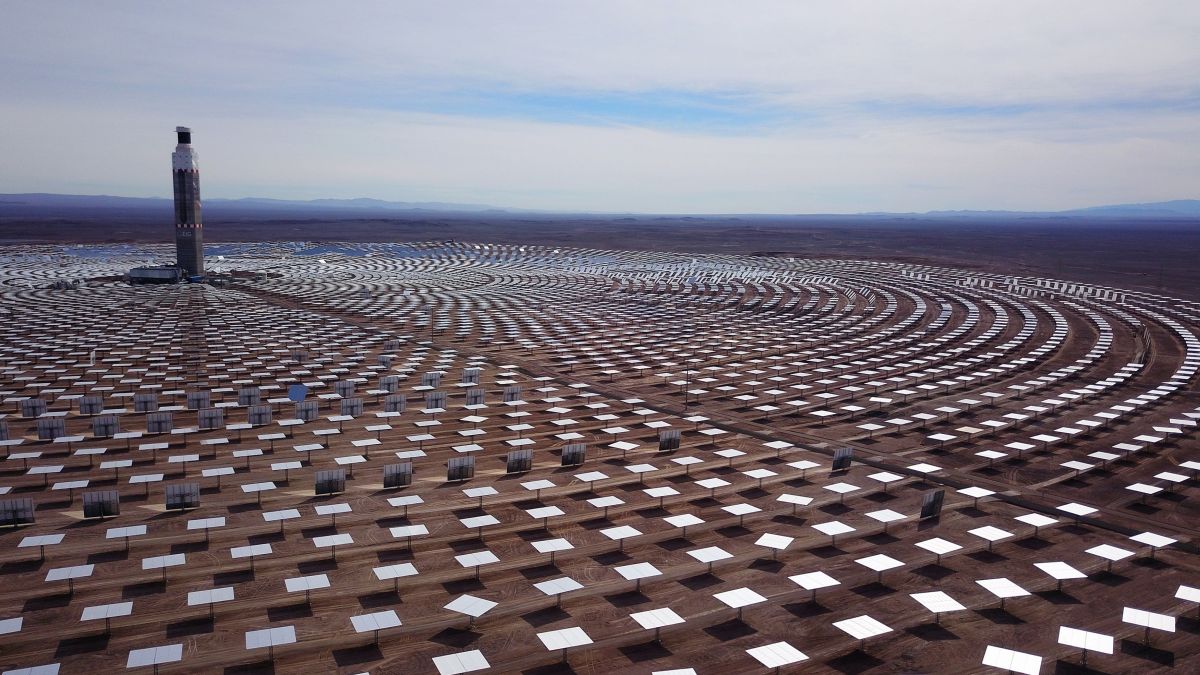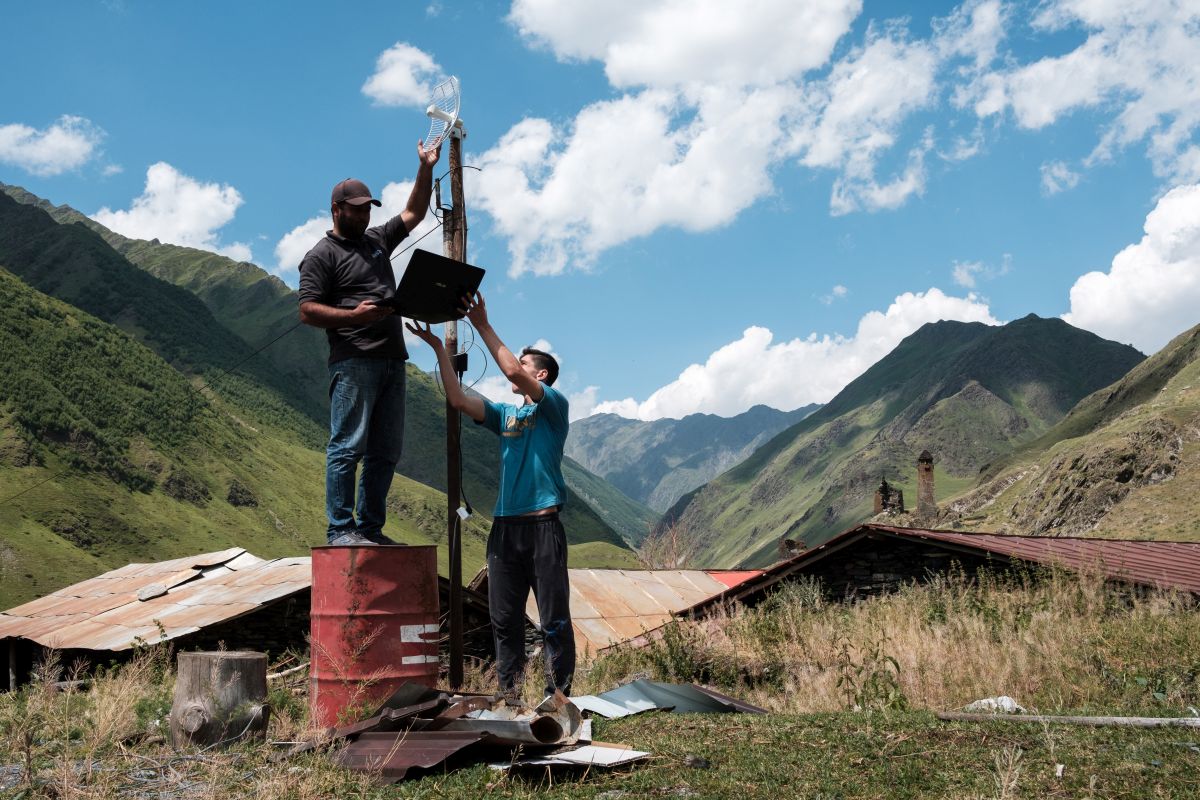Latin American Lithium Sector is Booming and Attracting the EU
The advancement of the global energy transition is intensifying the competition for access to lithium. Consequently, the significance of Latin American producers of this raw material—especially Argentina, Bolivia and Chile, which have more than half of the world’s proven reserves—is rising, but they differ in their concepts and the pace of exploiting this potential. The EU considers lithium a strategic raw material and seeks stable supply chains for it. To this end, it is strengthening cooperation with Latin American countries, led by Chile, the largest exporter of lithium to the EU, and through other means.
 IVAN ALVARADO / Reuters / Forum
IVAN ALVARADO / Reuters / Forum
Context
In a conservative forecast, the International Energy Agency (IEA) estimated that global demand for lithium would rise from 73,400 tonnes in 2020 to almost 242,000 tonnes in 2030 and almost 374,000 tonnes in 2040. Growth in battery production for electric cars and energy storage is the main driver. In 2020, these two areas accounted for less than 30% of lithium use, but it may be 74% in 2040. China is the largest producer of lithium-ion (Li-ion) batteries (over 76% in 2022), followed by Europe (over 8%), and the U.S. (7%). Although the IEA predicts a six-fold increase in European production by 2030 (to 11%), the U.S. is expected to take over second place in the coming years, reaching a 15% share by 2030.
The U.S. Geological Survey estimated global lithium reserves in 2022 at 97 million tonnes, with more than half of this in the so-called Lithium Triangle comprising Bolivia (21 million tonnes), Argentina (20 million tonnes), and Chile (11 million tonnes). Global reserves—the portion of resources considered available for extraction at present—is estimated at 26 million tonnes. In 2022, in this category, Chile ranked first (9.3 million tonnes of reserves and 36% of the global share), followed by Australia (6.2 million tonnes, almost 24%) and Argentina (2.7 million tonnes, over 10%). In contrast, Australia, Chile, China, and Argentina were the largest producers of lithium (first to fourth, respectively). Bolivia is not on the list because of lagging commercialisation of its deposits. The countries of the Lithium Triangle obtain the raw material through the evaporation of water from extensive salt pits (a process taking 6 to 18 months). On a smaller scale, in the region, there is also extraction potential in rock deposits—in Brazil, the fifth largest producer in 2022, and Peru—and in clay deposits in Mexico.
Lithium Boom in Latin America
The countries in the region are trying to exploit the growing potential associated with their lithium deposits, attracting investment partners while retaining control of the resource. However, they have to cope with challenges for sustainable exploitation, mitigating negative impacts on the environment and local communities.
In Chile, restrictive regulations on the exploitation have hampered development of the lithium sector. For example, concession fees depend on the level of production and may reach up to 40% if the price per tonne of the metal exceeds $10,000. The main companies in the sector are Chile’s SQM, with about one-quarter share of the Chinese company Tianqi Lithium, and Albemarle, a U.S.-based firm. The Chilean authorities want to put the impetus on new operations. In April, President Gabriel Boric announced the National Lithium Plan, which comprises creating a state-owned mining company and the sustainable exploitation of deposits through public-private partnerships, among other points.
Argentina stands out with a number of new lithium investments and may overtake Chile by the end of the decade in terms of the volume produced. Two active and expanding operations belong to the now merging companies Livent (U.S.) and Allkem (Australia). This year, Exar, which is co-owned by the company Ganfeng (China), Lithium Americas Corp. (Canada), and JEMSE (a company owned by the Argentine province of Jujuy) also launched a project.
In Bolivia, state-owned Yacimientos de Litio Boliviano (YLB), established in 2017, is responsible for exploitation of the metal. Unlike Argentina and Chile, Bolivian lithium deposits are more difficult to exploit due to the high share of magnesium in the deposit, among other reasons. Bolivia also was slow to choose a partner to commercialise the sector. In 2018, the government of President Evo Morales signed a contract with the German company ACISA, but it withdrew it in 2019 under public pressure. In 2021, the government of President Luis Arce launched a new tender. In January, it selected the Chinese consortium CBC, comprising CATL, the world’s top producer of lithium-ion car batteries, Brunp, and CMOC. CBC will build an industrial base using direct lithium extraction (DLE) technology.
Brazil lifted restrictions on the lithium trade in 2022 and is now promoting its Lithium Valley initiative to attract investment in deposits in Vale do Jequitinhonha, in Minas Gerais state. This year, Sigma Lithium (Canada) began mining the metal there. In Peru, there is one mine operating and owned by Lithium Americas Corp. Discussion on a state-owned mining company is underway in the Peruvian parliament. In Mexico, last year, the government of President Andrés Manuel López Obrador decided to nationalise the sector and establish a state-owned company called LitioMX, which will form partnerships with private investors, among other responsibilities. The main lithium investment is located in the state of Sonora and belongs to a company controlled by Ganfeng.
EU Perspective
Access to raw materials indispensable for the energy transition is crucial to implement the European Green Deal strategy. The EU is heavily dependent on their imports, so it works to ensure stable supply. Since 2011, every three years, it has been publishing a list of critical raw materials, selected on the basis of their economic importance or supply continuity risk. Lithium has been on it since 2020. In this year’s edition, battery grade lithium is also listed among 16 strategic raw materials essential for the green transition and the defence and space sectors. In 2020, the European Commission (EC) established the European Raw Materials Alliance (ERMA), a platform for cooperation between different EU interest groups. In March, it proposed the European Raw Materials Act aimed to strengthen the Union’s position at all stages of the supply chain. The EC believes that the EU can achieve self-sufficiency in car battery production by 2025. Developing an efficient waste-management system to recover various metals, including lithium, from used components is another goal.
According to Eurostat, in 2022, more than 85% of EU imports of lithium (in the form of lithium carbonate) came from Chile and less than 3.7% from Argentina; almost 95% went to the Netherlands, Belgium, and Germany. In July, at the EU-Community of Latin American and Caribbean (CELAC) summit of the Heads of State and Governments, the parties agreed to strengthen cooperation on clean-energy supply chains, critical raw materials and technology transfer, among other issues. Independently, the EU also signed a memorandum with Chile on cooperation in research and development, environmental standards, and knowledge exchange. The EU has committed to supporting its Latin American partners in the development of their industrial base, for example, in lithium processing, through the Global Gateway investment initiative.
Conclusions and Outlook
The EU’s global position depends on its success with the energy transition. Latin American countries are prospective partners for the Union in its aim to diversify sources and ensure stable access to key raw materials, including lithium. China’s dominant position as a lithium importer and producer of Li-on batteries, and the expected stronger place for the U.S., boosted by the 2022 Inflation Reduction Act, among other reasons—are some of the primary challenges to the Union’s ambition to develop supply chains with Latin American producers.
It is uncertain to what extent the EU will be able to deliver on its pledges of investment support of the industrial base in Latin American countries. This depends on the Union’s success in strengthening cooperation with these partners and creating effective incentives for EU business involvement in the lithium sector there. The Union may try to compete with China and the U.S. by cooperating with Latin American partners on sustainable production cycles, innovation in reducing raw material consumption, and negative impact on the environment and on local communities.
Ensuring stable long-term lithium supplies by the EU is in the interest of Poland, which has maintained its position as the EU’s largest exporter of Li-ion car batteries over the past few years, mainly thanks to South Korean investments. In Chile, the potential involvement of the Polish company KGHM—which has been present in the Chilean mining sector for more than a decade—in the exploitation of lithium, may favour Poland’s supply of the metal.





.jpg)